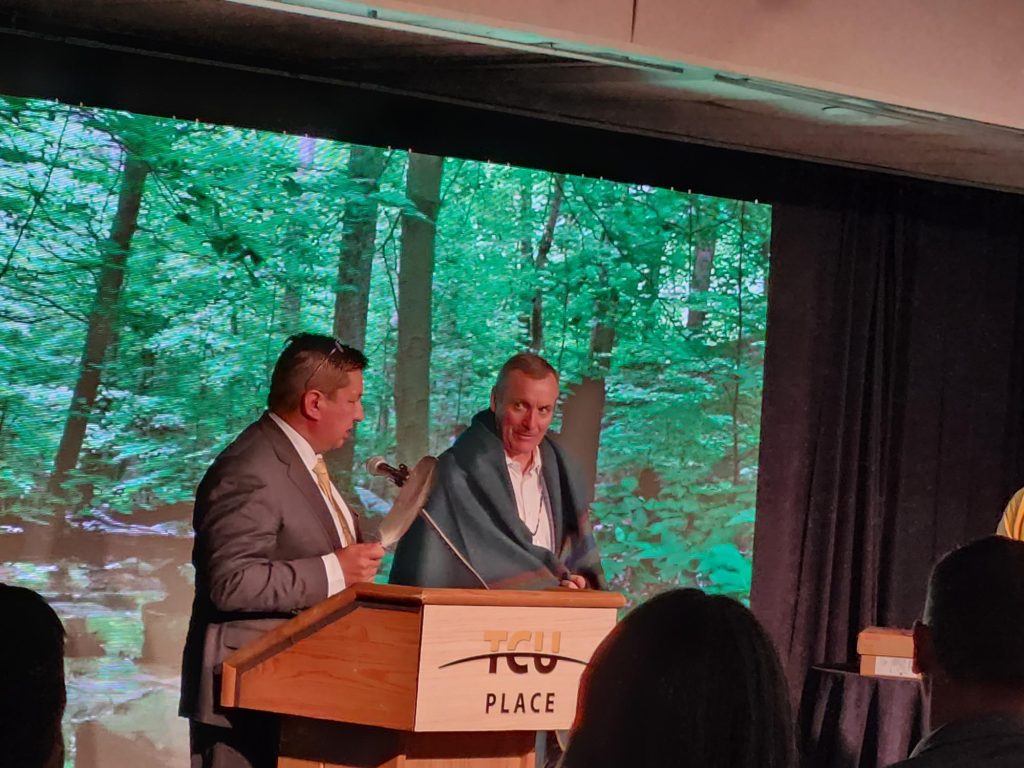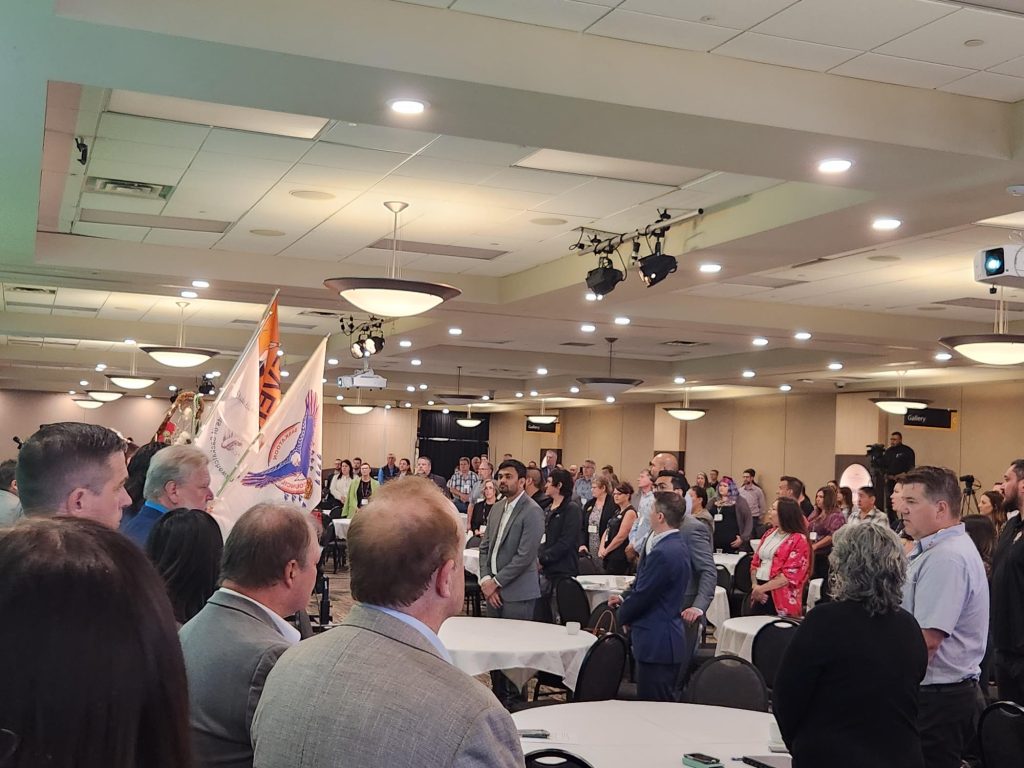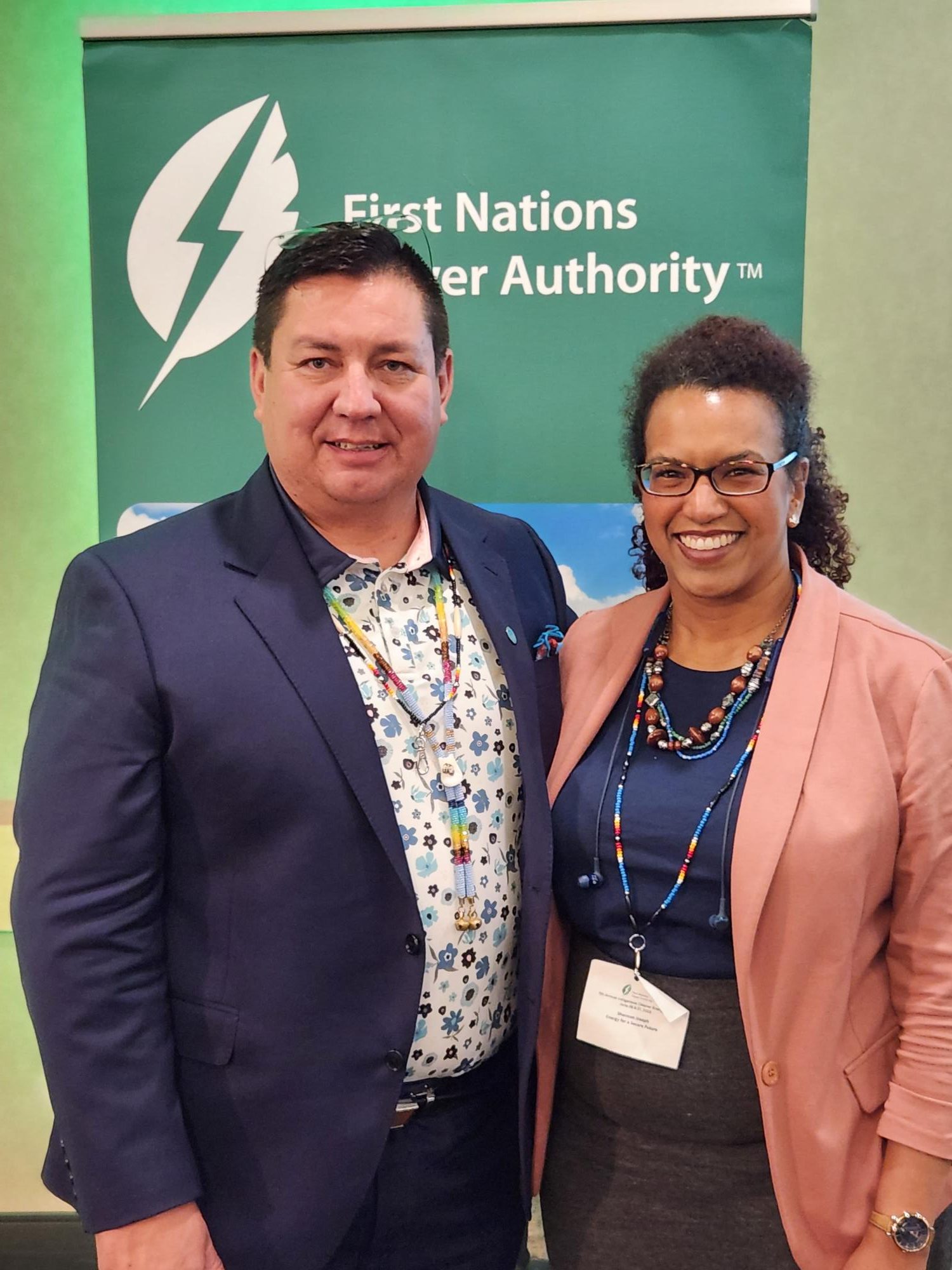By: Shannon Joseph
I first met Guy Lonechild, CEO of the First Nations Power Authority, via Zoom on his drive to California for golf. A mutual acquaintance had put us in touch because Guy was looking for opportunities to engage in the public conversation around energy, which has been highly active since February 2022. From his vantage point as head of an Indigenous organization working on energy issues nationally, he felt this was an important time for Indigenous peoples to weigh-in on the building of a more energy-secure world. Our first conversation revealed a lot of common ground, and a few months later, the First Nations Power Authority became an affiliate organization of Energy for a Secure Future.
Energy for a Secure Future is a civil society initiative that brings together a range of leaders from business, Indigenous communities, labour, agriculture and manufacturing to build a new conversation in Canada on the future of energy. A future that would be more secure with a robust role for gas energy and infrastructure domestically, and with Canada fully realizing its potential as a global liquified natural gas (LNG) exporter.
As Chair of the initiative, I had the opportunity to sit down with Guy for a more fulsome conversation about the global energy situation, energy and Canada’s Indigenous peoples, and our shared commitment to building a more secure future:
Shannon: Can you start off by speaking about who you are and what First Nations Power Authority is?
Guy: I’m the CEO of First Nations Power authority, which is the only non-profit organization in North America with a mandate to provide industry and Indigenous support to energy projects in Canada. We are technology agnostic and provide factual information on emissions intensity and how to deliver good projects that provide energy while supporting decarbonization.
Shannon: The global energy conversation has changed over the past few months, with the invasion of Ukraine, impacting global energy supply, rising energy costs – in your view, what’s the biggest energy challenge we face today?
Guy: Energy certainty has become a critical topic around kitchen tables and corporate tables throughout the world. People are realizing the challenge of ensuring secure supplies of energy, particularly natural gas, to heat homes and provide electricity for households. Energy sovereignty and access to cleaner sources of energy is also a big part of this challenge for all nations, including First Nations, and we all need to collaborate to achieve this.
We in Canada, are in a position to provide meaningful support to solving these issues globally, with First Nations right at the table. There is an important role globally for ethically produced oil and natural gas, without which, let’s be frank, there will not be a successful energy transition – particularly without adequate natural gas. At FNPA we want to look at domestic energy use, as well as import and export opportunities for Indigenous nations in Canada.

Shannon: Canadians might tend to take energy security for granted because it’s always been reliable and affordable. That’s not the case in many Indigenous communities, who truck in propane or rely on diesel shipments. Can you speak a bit about energy security for Indigenous communities?
Guy: Oh yes, I’m old enough to remember not even having propane delivery to households on reserve in the 70’s and into the 80’s. Many communities were not connected to the power grid or the natural gas system and even today some still are not. This is why new initiatives, like LNG, to remote Indigenous communities, has such important potential.
FNPA is also in discussion with Sask Energy about a project to extend natural gas service to reserves – to take away the uncertainty that can come from running out of propane and needing to wait for a refill. Aside from providing certainty, having that connection would significantly lower energy costs for those communities – another key step in improving quality of life.
Shannon: We are starting to see energy projects led by Indigenous nations or done in partnership with industry. Can you speak to some of these and what you think this all means for reconciliation?
Guy: There is a lot going on! In New Brunswick for example, some communities are working with the Port of Belledune on multiple potential energy initiatives, including small modular nuclear as well as hydrogen. There are 16 nations in Alberta with their own gas utilities and one in Saskatchewan – Onion Lake – delivering power to their own communities on reserve. They work in collaboration with TC Energy and other to access gas supply. Chief Judy Desjarlais of Blueberry River is looking at how to maximize value from the production of upstream gas in her territory for the LNG Canada facility as well as the recently approved, and Indigenous owned, Cedar LNG project. Nations in Treaty 6 are in dialogue with the Pathways Alliance on carbon capture and how to ensure that it is done in the right way.
Overall, nations are looking at how to use the resources in their territories to build up their local economies and provide jobs. They are also using their treaty and other rights to ensure things are done well and are generating lessons that can be used in other projects. All of this advances reconciliation.
Shannon: The federal government has established a net zero electricity generation target with the aim that in 2035, all electricity produced in Canada will be non-emitting. When it comes to meeting these goals, so much depends on where you are and what options are available to you, otherwise there can be significant costs. How are Indigenous nations involved in power production looking at these kinds of edicts?
Guy: That’s where we really have to be careful not to play a nasty trick on those who are most vulnerable in this whole clean energy conversation. A lot of capacity building and education is needed on what such targets mean in terms of investment. Provinces are starting in very different places – British Columbia, Manitoba and Quebec are big hydro producers, Ontario has relied heavily on nuclear and is looking at nuclear refurbishment and small-modular-reactors. In Saskatchewan or Alberta natural gas has to play a big role in bringing down electricity emissions otherwise we are not going to get to net zero.
The key thing is we cannot set up Indigenous communities or jurisdictions for failure. We can’t say Saskatchewan’s emissions reduction road should look like Ontario’s, because it can’t. There are assets and technologies like carbon capture or hydrogen, that can put us on a transition path. This can get us to net zero by 2050, but not 2035. The key thing is to be open to all avenues in how we get to the result.

Shannon: As a final question, many countries are trying to establish their own secure future and have come to Canada because they are seeking new energy partners. They don’t want, for example – to depend on Russian energy. What role can Indigenous nations play in supporting Canada’s allies with these challenges.
Guy: When other countries call on us, we have to answer that call and we need to it smartly. The conversation must be around how to help those allies of Canada, without polarization along party or provincial/federal lines. We need to come together on the economic benefits to all people in Canada – that come from exporting LNG in the right ways.
Indigenous nations are open for business in Canada, they are not anti-development. We need to build the knowledge base among Indigenous nations to be part of this conversations because they are key to Canada’s success in this space. We need to do a better job in Canada but also come together to send a Team Canada message to the world. This includes the positive role and value of Indigenous involvement in projects.
